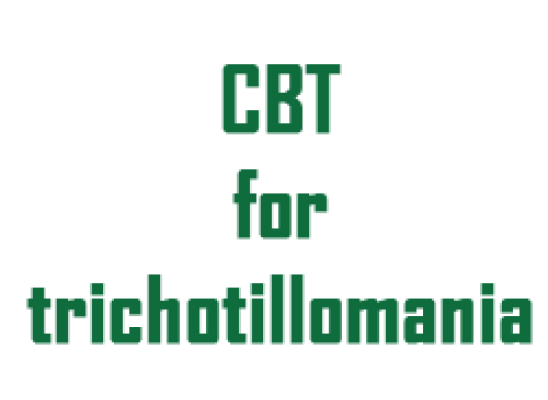What is Mindfulness? A Trichotillomania Perspective
Online test
Find out the severity of your symptoms with this free online test
 One of the most effective CBT developments for the treatment of Trichotillomania is Mindfulness Based Cognitive Behavioral Therapy. The primary goal is to learn to non-judgmentally accept uncomfortable psychological experiences. From a mindfulness perspective, much of our psychological distress is the result of trying to control and eliminate the discomfort of unwanted thoughts, feelings, sensations, and urges. In other words, our discomfort is not the problem - our attempt to control and eliminate our discomfort is the problem. For those with Trichotillomania, the ultimate goal of mindfulness is to develop the ability to more willingly experience their uncomfortable thoughts, feelings, sensations, and urges, without pulling their hair. Over the past few years, there has been an explosion of interest in the concept of "mindfulness" as it applies to mental health treatment. But most people, including many seeking help for OCD and related anxiety based conditions, are not exactly sure what mindfulness is, or how to apply it to their life
One of the most effective CBT developments for the treatment of Trichotillomania is Mindfulness Based Cognitive Behavioral Therapy. The primary goal is to learn to non-judgmentally accept uncomfortable psychological experiences. From a mindfulness perspective, much of our psychological distress is the result of trying to control and eliminate the discomfort of unwanted thoughts, feelings, sensations, and urges. In other words, our discomfort is not the problem - our attempt to control and eliminate our discomfort is the problem. For those with Trichotillomania, the ultimate goal of mindfulness is to develop the ability to more willingly experience their uncomfortable thoughts, feelings, sensations, and urges, without pulling their hair. Over the past few years, there has been an explosion of interest in the concept of "mindfulness" as it applies to mental health treatment. But most people, including many seeking help for OCD and related anxiety based conditions, are not exactly sure what mindfulness is, or how to apply it to their life
What is Mindfulness?
According to Jon Kabat-Zinn:
...mindfulness can be defined as paying attention in a particular way on purpose in a present moment and non-judgmentally. Mindfulness is not a state of doing but a state of being in which you are fully aware of the present moment and do not evaluate your inner or outer environment. Mindfulness is a state of self-regulation of your attention and the ability to direct it towards breathing, eating, or something else. Curiosity, openness, and acceptance are all part of being mindful.
Do I Have Trichotillomania?Check the severity of your hair pulling symptoms with this free online test
Mindfulness-Based Cognitive Therapy (MBCT) combines the ideas of cognitive therapy with meditative practices and attitudes based on the cultivation of mindfulness. The heart of this work lies in becoming aware of the thoughts that characterize our emotions while simultaneously learning to develop a new relationship to these thoughts. The technique is applied through a therapy program that teaches clients the art of mindfulness meditation combined with 'homework' assigniments. Clients gain an ability to realign themselves away from their thoughts and feelings and focus instead on the occurring changes in their body and mind through meditative exercises such as yoga, breathing, and meditation.
What does it entail?
While undergoing this form of therapy, a client is instructed to recognize their sense of being and to see themselves as separate from their thoughts and moods. This disconnect allows a client to become liberated from obsessive thought patterns that often replay the same negative messages over and over. Rather than being forced to live the mood, the client gains an awareness of the separation and begins to understand that they are in the the present moment and while the negative thought or emotion exists, it does not define them. By differentiating themselves from their thoughts, the client is then empowered to self-heal by interjecting positive thoughts and responses to the negative ones in order to neutralize them. During mindfulness-based therapy you will train yourself to harness your wondering thoughts and bring back your attention to the present moment. Anxiety has often seen to be related to hair pulling disorder. People who are anxious, often dwell on how things can go wrong, these thoughts often based on past bad experiences. A combination of mindfulness based stress reduction and cognitive therapy has been shown to be very effective for treatment of anxiety, depression, OCD as well as body-focussed repetitive behaviors such as trichotillomania.
obsessive thought patterns that often replay the same negative messages over and over. Rather than being forced to live the mood, the client gains an awareness of the separation and begins to understand that they are in the the present moment and while the negative thought or emotion exists, it does not define them. By differentiating themselves from their thoughts, the client is then empowered to self-heal by interjecting positive thoughts and responses to the negative ones in order to neutralize them. During mindfulness-based therapy you will train yourself to harness your wondering thoughts and bring back your attention to the present moment. Anxiety has often seen to be related to hair pulling disorder. People who are anxious, often dwell on how things can go wrong, these thoughts often based on past bad experiences. A combination of mindfulness based stress reduction and cognitive therapy has been shown to be very effective for treatment of anxiety, depression, OCD as well as body-focussed repetitive behaviors such as trichotillomania.
How does it work?
Participants are armed with knowledge regarding their condition, and are given additional tools to combat their symptoms as they arise. This form of therapy is often used in conjunction with other therapies and treatments in order to facilitate a complete and rapid progression to healing. Clients who use this technique will often be able to revert to these methods in times of distress or when they are faced with situations that cause them to lose their sense of separation from their thoughts. For example people with trichotillomania often describe a trance-like state during hair pulling episodes. During these times the person may be so emersed in the negative thought or emotion that it is difficult to break out of the behavior. Mindfulness is about providing the client the skills to be aware of these thoughts before the urge to pull kicks in to prevent this state of behavioral engagement from occurring.
Online test
Find out the severity of your symptoms with this free online test
Start your journey with TrichStop
Take control of your life and find freedom from hair pulling through professional therapy and evidence-based behavioral techniques.
Start Now



